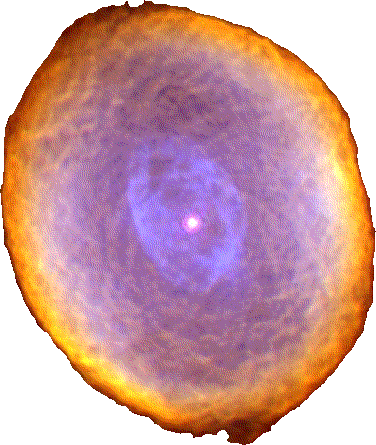| Home Welcome |
world
| DEVELOPMENT DRAFT The only stable URL is http://www.vendian.org/howbig/. Comments encouraged - mncharity@vendian.org (Mitchell Charity) |
How Big Are Things?
|
small | Real world |
big | solar system | between | galaxy | ||||||||||||||||||||
| nano |
micro |
meter |
kilo |
Mega |
Giga |
Tera |
Peta |
Exa |
||||||||||||||||||
| Terameter's Room - looking at the entire room |
|
look at a sheet of graph paper |
|
| galaxy | 21 | |
| 20 19 | ||
| local stars | 18 | |
| 17 16 | ||
| between | 15 | |
| 14 13 | ||
| E's orbit | 12 | |
| 11 10 | ||
| sun | 9 | |
| 8 7 | ||
| texas | 6 | |
| 5 4 | ||
| hood | 3 | |
| 2 1 | ||
| you | 0 | |
| -1 -2 | ||
| salt grain | -3 | |
| -4 -5 | ||
| bacteria | -6 | |
| -7 -8 | ||
| atom | -9 |
| All alone in the night... |
|
|
| light-Megaseconds ( 106 lt·s ) | |||||
| light-year | ||
 src srca small planetary nebula Size is only approximate. False color. |
A planetary nebula represents the final stage in the evolution of a star similar to our Sun. The star at the center of IC 418 was a red giant a few thousand years ago, but then ejected its outer layers into space to form the nebula, which has now expanded to a diameter of about 0.1 light-year. The stellar remnant at the center is the hot core of the red giant, from which ultraviolet radiation floods out into the surrounding gas, causing it to fluoresce. Over the next several thousand years, the nebula will gradually disperse into space, and then the star will cool and fade away for billions of years as a white dwarf. Our own Sun is expected to undergo a similar fate, but this will not occur until some 5 billion years from now. |
(c) 2000-2003 Mitchell N Charity. All rights reserved.
Noncommercial use is fine. Otherwise, ask.